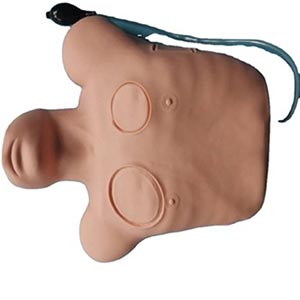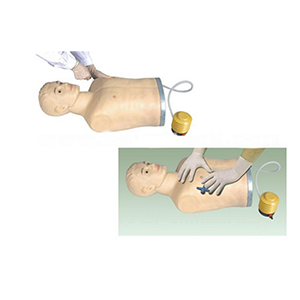Homepageпјҡ NEWS >> Can a pneumothorax model be used to improve clinical judgment?
Pneumothorax management is a common and critical clinical skill in emergency and critical care medicine. Correctly judging the type and severity of pneumothorax, and promptly taking corresponding treatment measures, often directly related to the patient's life safety. In order to help medical students and medical staff improve their pneumothorax management ability, the appearance of pneumothorax management model provides a strong support for clinical training. So, does this model really improve clinical judgment significantly?
Function and effect of pneumothorax treatment model
Pneumothorax treatment model is a highly simulated and specially designed training equipment for simulating pneumothorax treatment process. It simulates the various clinical manifestations of pneumothorax patients, such as shortness of breath, chest pain, etc., as well as the scenes requiring thoracopuncture, drainage and other operations, to help students better understand and master the treatment process. Through repeated practice, participants are able to improve their clinical manipulation skills and decision-making abilities in a safe, controlled environment.

Improvement of clinical judgment ability
Clinical judgment ability refers to the ability of medical personnel to quickly and accurately analyze the condition, make correct diagnosis and choose appropriate treatment plan when facing complex and changeable patient situation. Pneumothorax treatment model through the following aspects to improve the clinical judgment ability of students:
1. Enhance clinical experience: By simulating real pneumothorax cases, the model enables students to accumulate experience in actual operation. In the face of different types of pneumothorax in the model (such as spontaneous pneumothorax, traumatic pneumothorax, etc.), students need to quickly judge the condition and choose the corresponding treatment plan. Through the simulation, participants are able to train several times without patient risk and gradually improve their judgment.
2. Immediate feedback and reflection: pneumothorax treatment models usually have a feedback mechanism, which can provide trainees with operational feedback, such as whether the thoracic puncture is correct and whether the drainage is smooth. This immediate feedback helps students quickly identify and correct operational errors, improving their ability to identify problems and make improvements.
3. Situational simulation: The model can highly restore the clinical manifestations in different situations, and increase the students' clinical intuition and ability to cope with complex situations. For example, students can simulate the changes in vital signs of patients due to pneumothorax and learn how to identify changes in the condition and make emergency decisions.

Data support: Validity of pneumothorax processing model
Studies have shown that training using pneumothorax handling models can significantly improve trainees' abilities in first aid and clinical judgment. By comparing the operational accuracy and judgment ability of the trainees before and after the simulation training, the relevant data show that the operational accuracy of the trainees who receive the pneumothorax processing model training is improved by 20%-30%, and they can be more relaxed in the actual emergency situation.
For example, a study by a medical training organization showed that participants who underwent simulated training in pneumothorax management improved their accuracy of pneumothorax diagnosis by about 25% in simulated emergency situations. In addition, the success rate of the trainees during the thoracic drainage procedure was significantly improved. These results show that the pneumothorax treatment model plays a positive role in improving the students' clinical judgment ability and reducing clinical errors.
conclusion
Overall, the pneumothorax treatment model has a significant effect on improving the clinical judgment ability of students. By simulating real clinical situations, students can perform a lot of exercises without patient risk and improve their judgment and ability to respond to unexpected situations. Combined with data support, pneumothorax treatment model has become an indispensable tool in first aid training, helping medical students and medical staff to better provide emergency treatment for patients.